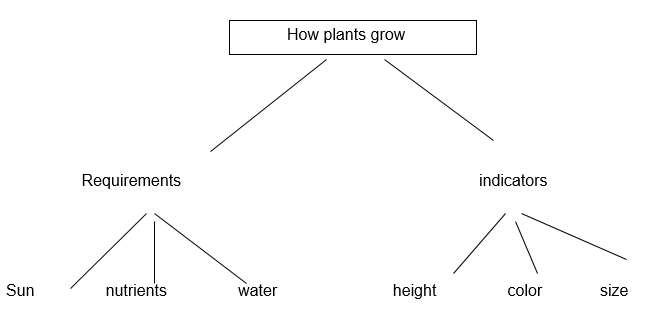Curriculum design
The ecology unit is to be taught in collaborative settings emphasizing the following objectives.
- Understating of the terms related to ecology. The terms to be discussed include among others, environment, ecosystem, botany
- Understanding of the daily experiences relating to ecology
- Understanding of ecological problems and their solution.
The teaching of this unit will be through:
- Group work
- Research.
The assessment for the learning will be through:
- The group work presented.
- The summaries of lessons learnt from the topic by each student.
Approaches to use in the collaborative teaching
The teacher will pose a question to students. The students will be required to form groups of four to five people to discuss this question. The group will have a secretary and a chair. The question will be the same for the whole class. Each student will be required to give their input by first doing their own research and then presenting the same for a group discussion. The findings of each group will be summarized by a secretary appointed by all members. The findings of the group will then be presented before the class by the group’s chair after the elapse of the time given. As presentations go on, students will be required to note what they learn (Murawski, 2009).
Subject approach and individual curriculum approach
Subject approach differs from individual approach on many grounds. In subject approach, the various contents are the target. In this curricula thus, the teacher organizes the learning by focusing on the relationship of the knowledge areas to be captured. For individual learning on the other hand, learning is organized by using the knowledge level and understating of the individual leaner as the beginning. The movement to another content level is based on the fact that the learner has understood the previous one (Davis, 2009).
However the two still differ a lot. As an example unlike individual approach, subject approach makes it possible to achieve specific objectives. This is because the content to be taught is organized in the way it is to be presented. From this, all the intended content is included and taught. In the individual curriculum on the other hand, the content may have to be varied depending on many qualities specific for the learner.
Such qualities include the level of the learner as well as age (O’Donnell, et al. 2006). Because this deviation is more the case in individual curriculum, specific objective are hard to be met. With subject approach, the transition for leaner may not be smooth as it is in the individual curriculum approach. In the individual curriculum, the understanding of the learner is the target thus the leaner learns content before being moved to the next level.
This helps in understanding and smooth transition. In the subject approach on the other hand, learning is presented by the sequence of topics and the learner may be taken to another topic even when the foundations or preliminary knowledge has not been fully understood. The movement from content to another is thus smooth. The two approaches are related from the fact that knowledge is developed from the point of simpler one to the more difficult content. On this, both emphasize moving from known to the unknown.
The use technology
In the class setting the internet can be an effective tool. As an example while teaching this unit of ecology or plants, the students can be individually required by the teacher to bring their laptops to class for research. As the teacher gives them the question, they would be required to search for information relating to the topic and thus get the material to contribute of build on for the class discussion (Roberts, 2004). The students can also use the internet to further expound their knowledge on what they learnt in class.
The teacher can also use the internet in many ways. As an example, such can use the internet to get the unanswered questions on the topic. This can be from suggestions from research done and not completed, from discussions on social sites or from online questions posted by researchers and academicians. The teacher can pose these questions to the students. The teacher can also use the internet to search for more information on the unit.
This helps the teacher to expound knowledge and thus be very ready to answer all the questions posted by the student. The use of the internet to search for knowledge also helps the teacher to be as detailed as possible in explanations to the students and thus aid them more to understanding. Both the teacher and students can use the social sites to let other people know what they have learnt from this lesson. This can be an important media for revision and for getting more information n the unit.
Concept map

In the reading of the concepts, freemind can also be used. This program has been selected for the reasons including the fact that it is compatible with many software tools.
References
Davis, B. G. (2009). Tools for teaching. San Francisco, CA: Jossey-Bass.
Murawski, W. W. (2009). Collaborative teaching in secondary schools: Making the co-teaching marriage work!. Thousand Oaks, Calif: Corwin.
O’Donnell, A. et al. (2006). Collaborative learning, reasoning, and technology. New York: Routledge, 2006
Roberts, T. S. (2004). Online collaborative learning: Theory and practice. Hershey Pa: Information Science Pub.